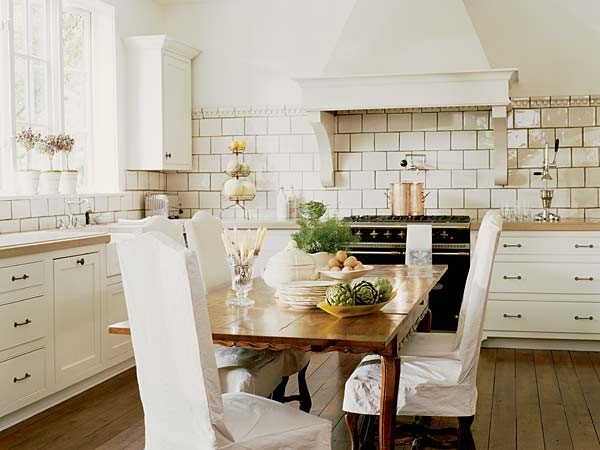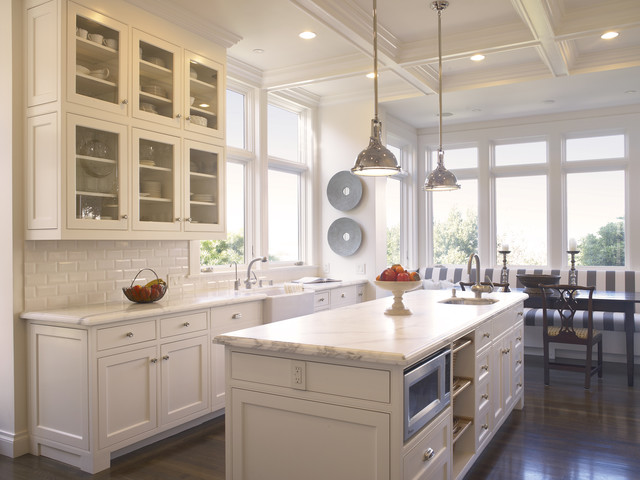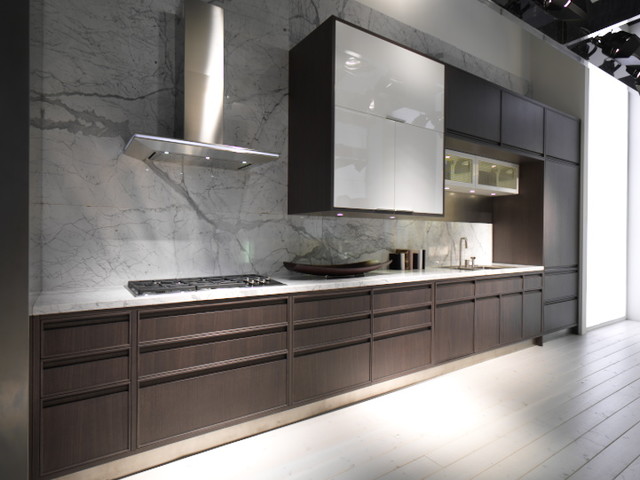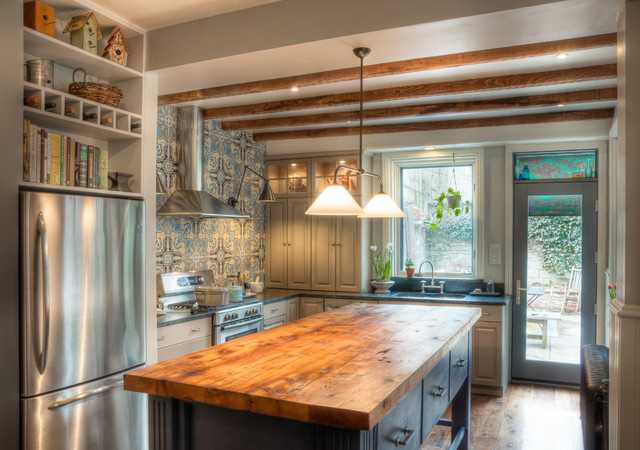How to Remodel Your Kitchen
Once you've simmered in this phase long enough and you're ready to green-light a kitchen remodeling project, then what? Here we'll start with the first 10 steps and we'll get into the nitty-gritty details under specific steps as we move through the workbook in the coming weeks.
Browse kitchen designs | Find a kitchen designer
|
Step 2: Explore your style
Do you like modern, classic, traditional, country — some sub-style in between? Do you want a white kitchen, a natural wood kitchen, or do you want some color? What about flooring? Most homeowners get overwhelmed when thinking about all these decisions at once — so don't. Who says you have to? Just add those kitchen inspiration images to your folders without thinking about why you like it, and worry over the details later. It's so much easier and more fun this way. This is also a great time to start shopping for a designer or architect as well if that’s in the cards for your type of project. Some homeowners hire a professional right away to help them through the inspiration-gathering process. |
|
Step 3: Research and plan
Ready to green-light that project and take the plunge? The best place to start is by formulating what's commonly referred to as a "scope of work" and figuring out your preliminary budget. Both of these may be subject to change, so don't feel like you have only once chance at this. Budget and scope are intertwined and often change many times during the design process as you become more educated and able to reconcile what you want and what you can afford. As a homeowner, you're not expected to walk into this knowing what everything should cost. Remember, this is an educational process. Step 4: Hire a professional Even if you're going the DIY route, unless you're building your own kitchen cabinets and doing your own electrical and plumbing, you're going to have to work with a professional at some point. It may be as brief as leaning on your salesperson to help you in selecting and ordering your appliances or cabinets, but it's something to plan on either way. Some people start by visiting big-box stores or cabinet showrooms where they can see everything.Many homeowners get referrals from friends or colleagues and start by hiring an architect ordesigner. Still others might work on their own with a builder or contractor. This step includes so many levels that it warrants its own in-depth story to cover everything from contracts and permits, to space planning, budgets, product ordering and project management. Step 5: Schematic design This phase includes sketches, space planning, preliminary floor plans and elevations showing the layout and cabinet sizes. You'll look at color studies and talk about finishes and fixtures such as cabinet color, flooring and tile options, color palette, backsplash and countertop materials. At this point you may be narrowing selections down to your top three. I try to keep my clients focused more on layout and space planning, even though the temptation is to talk about what the kitchen will look like, ie. fixtures and finishes. But I find that getting caught up in the look too early can distract from the space planning phase. Plus, you need a plan in order to figure out what materials will go where, and how many square feet you will need, and ultimately how much this will cost. Preliminary budget work can also be done at the end of this phase. I like to begin the contractor interview process early and give them a preliminary drawing packet and scope of work so we can get some ballpark construction numbers. At the same time you can be sending out drawings for estimates on finishes and fixtures. Step 6: Fixture and finish specification Final selection of finishes and fixtures is made. This usually includes:
|
|
Step 7: Work on design development and construction documents
This is the stage when you finalize the design and prepare final floor plans, elevations, details and, if applicable, mechanical and electrical drawings, lighting switch plans, and exterior elevations. This is where your final permit set or Construction Drawings (CDs) come into play. It's important to have finishes and fixtures selected at this time, since this is what will be considered in the final pricing from the contractor. You'll submit drawings for permits. These have a lead time, so check the timing with your local village. You'll need a contractor signed up to finalize the paperwork and pick up your permits, so get ready to hire someone in the next step. I often find that we're submitting for permits around the same time or a little bit after we've placed the cabinet order, due to similar lead times. Step 8: Get contractor estimates On occasion, this step happens earlier in the process; it depends on the type of job. I always recommend to my clients to get at least 3 different contractor estimates. I like to do preliminary walk-throughs with the contractors once the schematic designs are done so we can get some ballpark estimates and find out if we're on the right track or need to pull back some to fit the budget. Step 9: Get ready for demo The big day is upon us, most likely something like 4-8 weeks from when you submitted for permits. Time to get that schedule firmed up and plan on cleaning out the cabinets, putting what you don't need in storage and — if you're living in the house during construction — setting up a temporary kitchen so you don't lose your mind! You may be moving out of your house temporarily, but most homeowners white-knuckle it and try to live in the house through construction. Preparation and organization can save your sanity. Discuss the logistics ahead of time with your contractor. Will you meet once a week for updates? Will you have to be out of the house for certain tasks like demo or flooring? What about debris removal and dust? Are there any family allergy issues? What is a typical work day for the crew? Getting all this on the table beforehand can set expectations and make for a smoother ride. Step 10: Surviving the dreaded punch list Once construction is over, well ... almost over ... there's always this annoying little list of items that are missing, wrong, or simply forgotten about. A missing light switch plate, a caulk line that shrank and pulled away from the wall, paint touch ups — small things like this, and sometimes bigger things like the hood doesn't work, or there's a big scratch in the newly refinished floor. Sometimes the homeowner does the punch list. It can be as informal as an emailed list of items that need to be fixed or finished. I like to use a little form I put together that identifies the item to be fixed or finished, the responsible party and the date of completion. I send it to the client for review, changes and additions, and then off to the contractor. It's inevitable that the contractor may have to make multiple visits back to the house to finish these items; prepare yourself for more than one visit and you'll be fine.The best way to approach this is with a Zen attitude. Things happen, little things get missed. It's sort of like making a list for the grocery store and still forgetting some key ingredient. We all do it. |



